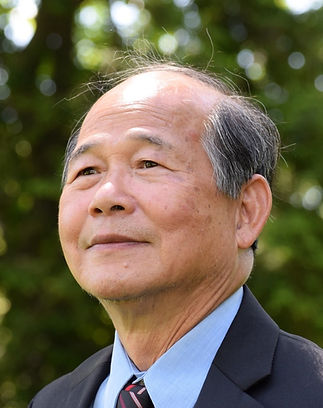
專題演講
專題主講人
The Metamorphic Mechanisms Towards Mechanism Evolution, Embodied Intelligence, and the Structural Evolutionary Robotics
Professor Jian S Dai,
ASME Fellow, IEEE Fellow, FREng, MAE
Embodied intelligence is the ultimate form of artificial intelligence, serving as a bridge between artificial intelligence and the physical world. The development of artificial intelligence to this day requires corresponding bodies and structures to enable its intervention in the physical world. The embodied intelligence poses higher requirements, requiring transformation, evolution, and metamorphosis. Metamorphosis originated from artistic inspiration, developed from biology, and benefited from the structure of robots. This type of intelligent structures in the form of metamorphic mechanisms can be transformed and modified without decomposition or recombination, enabling different structure branches to be activated for different environments and different degrees of freedom to be activated for different tasks, thereby achieving efficiency, economy, and energy conservation. The embodied intelligent metamorphic robot adopts this variable structure, variable topology, and variable degree of freedom, integrating structural intelligence with algorithmic intelligence to create a perfect embodied intelligent robot. This plenary speech introduces the history, theory, development, and application of embodied intelligent metamorphic robots based on these principles, and provides application videos for various scenarios.
田納西理工大學機械系教授
丁崑隆 教授
-
Member, ASME Mechanisms and Robotics Committee, 2005-
-
Chair, Theoretical and Computational Kinematics Symposium, 2006 ASME International Design Engineering Technical Conference
-
Member, Mechanism and Transmission Committee, the Chinese Academy of Mechanical Engineering, 2002-
-
Honorary Member, Editorial Committee, Machine Design and Research, China, 2001-
-
Who's Who in the South and Southwest
-
Who's Who in Science and Engineering
-
Outstanding Service Award, Applied Mechanisms and Robotics Conference, 1989
-
Outstanding Young Men of America, 1986
-
Co-Director and Paper Review Chairman, National Applied Mechanisms and Robotics Conference, 1989-1991
-
Technical Committee, National Applied Mechanisms and Robotic Conference, 1989-1999

發現 N-bar Rotatability Laws 的心路與思路歷程
Ting’s Rotatability Laws(或稱丁氏定理)是幾何學與機構學間一系列新發現的觀念與定理。它們以很簡單的方式圓滿且有系統的解釋並預告任何N-bar chain 的轉動特性。這些觀念與定理構成一套理論填補了數百年來從(靜態的)幾何學到(動態的)機構學間一片未知的空白。
Ting’s Rotatability Theory包括以下主要部份。
-
Invariant link rotatability
-
Long link 和short link 的觀念與定理
-
N-bar chains 的分類和各類特性
-
Links間擺動的極限
-
Singularity-free (or fully rotatable) linkages
-
Micro rotatability: (rotatability) effect of joint clearances
-
球面機構的有效延伸: 介紹球面機構dimensions 的 fundamental representation 及rotatability laws 的全面有效適用
-
Sheet and side of joint rotation space (or configuration space): 用Sheet 和 side 的簡單觀念建立並認識configuration space 及singularity-free configuration space 的模型.
發現科學上的定理是每個科學工作者難圓的夢。 畢竟出生太晚了, 該發現的基本定理似乎都已被過去數百年傑出的科學家、數學家、探險家如阿基米德,牛頓,哥白尼,哥倫布捷足先登了。更不用說是基本的定理了。
令人驚奇的是現代的機械原理中竟存在著如丁氏定理這樣簡單的基本定理. 它們竟然等到現在才被發現。有人問我 “您怎麼會想到這問題?” 事實上從在我心中大喊”I find it!” 的那一刻起到現在,我仍然問自己”Why it is me?”。
本演講旨在與國人分享發現的喜悅並以丁氏定理的發現為例探索這“發現問題”、”確定問題” 乃至”解決問題”的問題。前二者是 Vision and Faith主觀的心路歷程,是導致或支持發現的背後動力。 後者是思路歷程, 是客觀的認識及體會。
